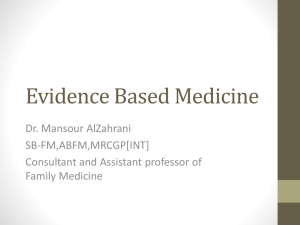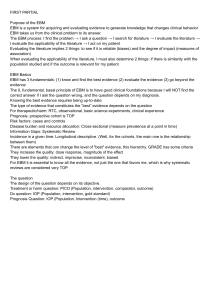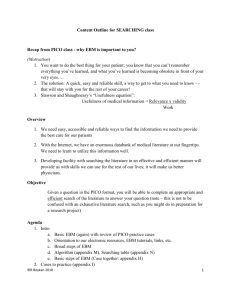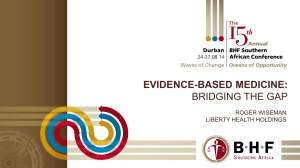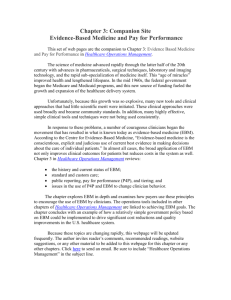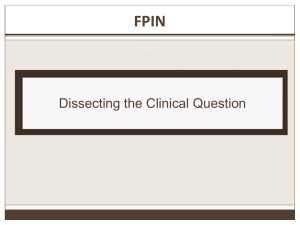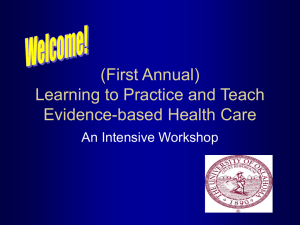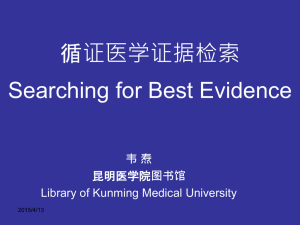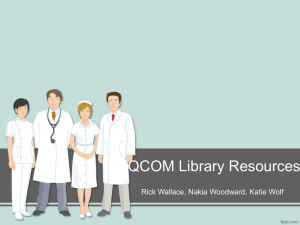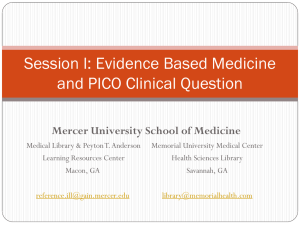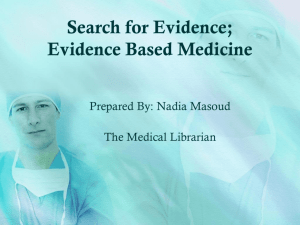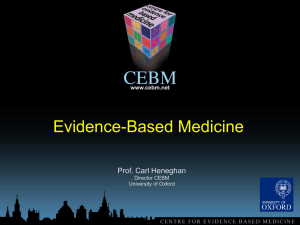PICO, Pyramids and PubMed - Rutgers University Libraries
advertisement
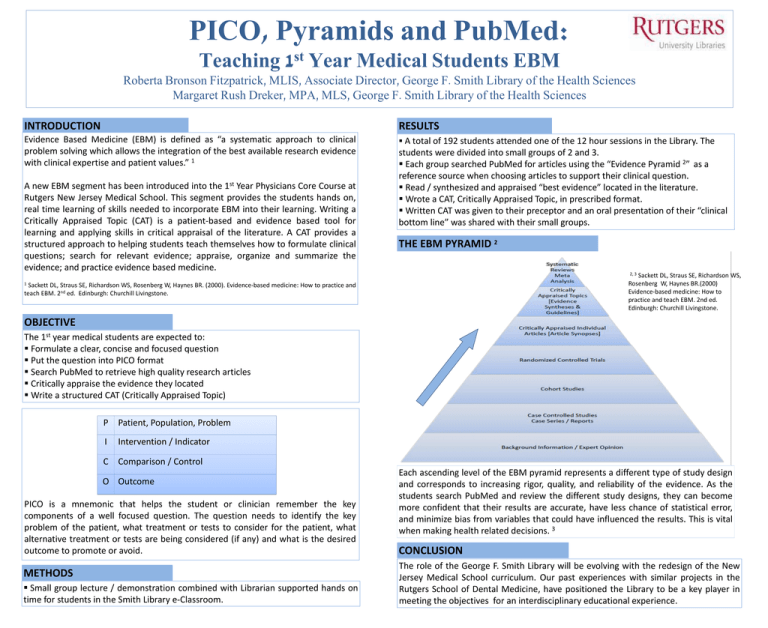
PICO, Pyramids and PubMed: Teaching st 1 Year Medical Students EBM Roberta Bronson Fitzpatrick, MLIS, Associate Director, George F. Smith Library of the Health Sciences Margaret Rush Dreker, MPA, MLS, George F. Smith Library of the Health Sciences INTRODUCTION RESULTS Evidence Based Medicine (EBM) is defined as “a systematic approach to clinical problem solving which allows the integration of the best available research evidence with clinical expertise and patient values.” 1 A total of 192 students attended one of the 12 hour sessions in the Library. The A new EBM segment has been introduced into the 1st Year Physicians Core Course at Rutgers New Jersey Medical School. This segment provides the students hands on, real time learning of skills needed to incorporate EBM into their learning. Writing a Critically Appraised Topic (CAT) is a patient-based and evidence based tool for learning and applying skills in critical appraisal of the literature. A CAT provides a structured approach to helping students teach themselves how to formulate clinical questions; search for relevant evidence; appraise, organize and summarize the evidence; and practice evidence based medicine. students were divided into small groups of 2 and 3. Each group searched PubMed for articles using the “Evidence Pyramid 2” as a reference source when choosing articles to support their clinical question. Read / synthesized and appraised “best evidence” located in the literature. Wrote a CAT, Critically Appraised Topic, in prescribed format. Written CAT was given to their preceptor and an oral presentation of their “clinical bottom line” was shared with their small groups. THE EBM PYRAMID 2 2, 3 Sackett DL, Straus SE, Richardson WS, Rosenberg W, Haynes BR.(2000) Evidence-based medicine: How to practice and teach EBM. 2nd ed. Edinburgh: Churchill Livingstone. 1 Sackett DL, Straus SE, Richardson WS, Rosenberg W, Haynes BR. (2000). Evidence-based medicine: How to practice and teach EBM. 2nd ed. Edinburgh: Churchill Livingstone. OBJECTIVE The 1st year medical students are expected to: Formulate a clear, concise and focused question Put the question into PICO format Search PubMed to retrieve high quality research articles Critically appraise the evidence they located Write a structured CAT (Critically Appraised Topic) P Patient, Population, Problem I Intervention / Indicator C Comparison / Control O Outcome PICO is a mnemonic that helps the student or clinician remember the key components of a well focused question. The question needs to identify the key problem of the patient, what treatment or tests to consider for the patient, what alternative treatment or tests are being considered (if any) and what is the desired outcome to promote or avoid. METHODS Small group lecture / demonstration combined with Librarian supported hands on time for students in the Smith Library e-Classroom. Each ascending level of the EBM pyramid represents a different type of study design and corresponds to increasing rigor, quality, and reliability of the evidence. As the students search PubMed and review the different study designs, they can become more confident that their results are accurate, have less chance of statistical error, and minimize bias from variables that could have influenced the results. This is vital when making health related decisions. 3 CONCLUSION The role of the George F. Smith Library will be evolving with the redesign of the New Jersey Medical School curriculum. Our past experiences with similar projects in the Rutgers School of Dental Medicine, have positioned the Library to be a key player in meeting the objectives for an interdisciplinary educational experience.
